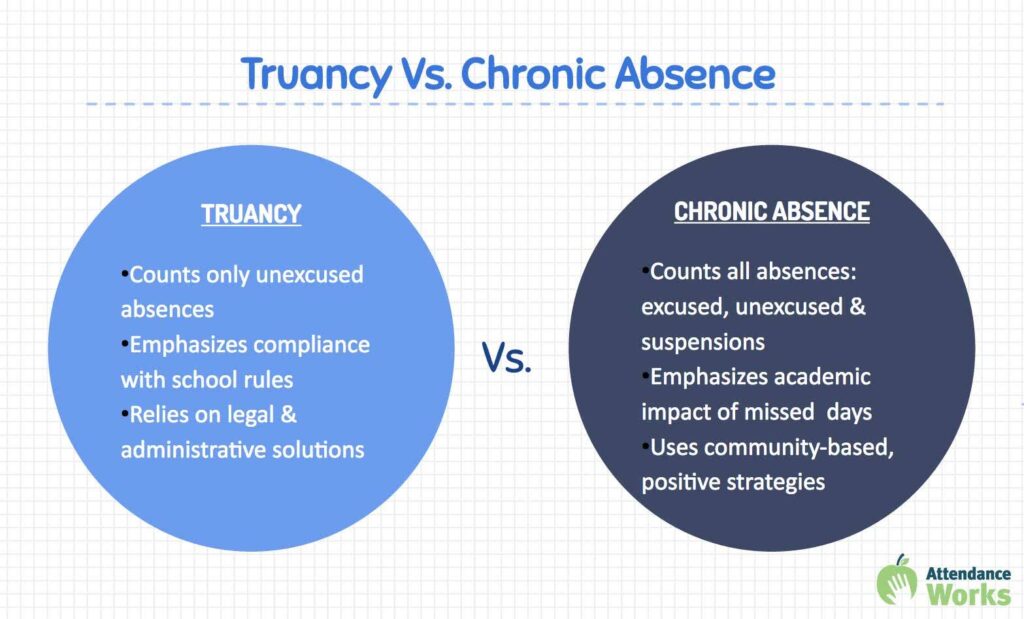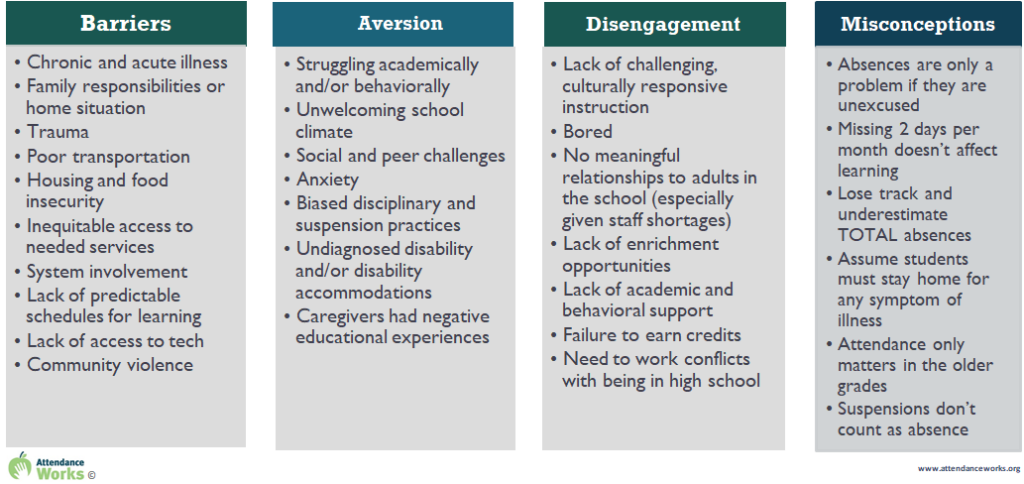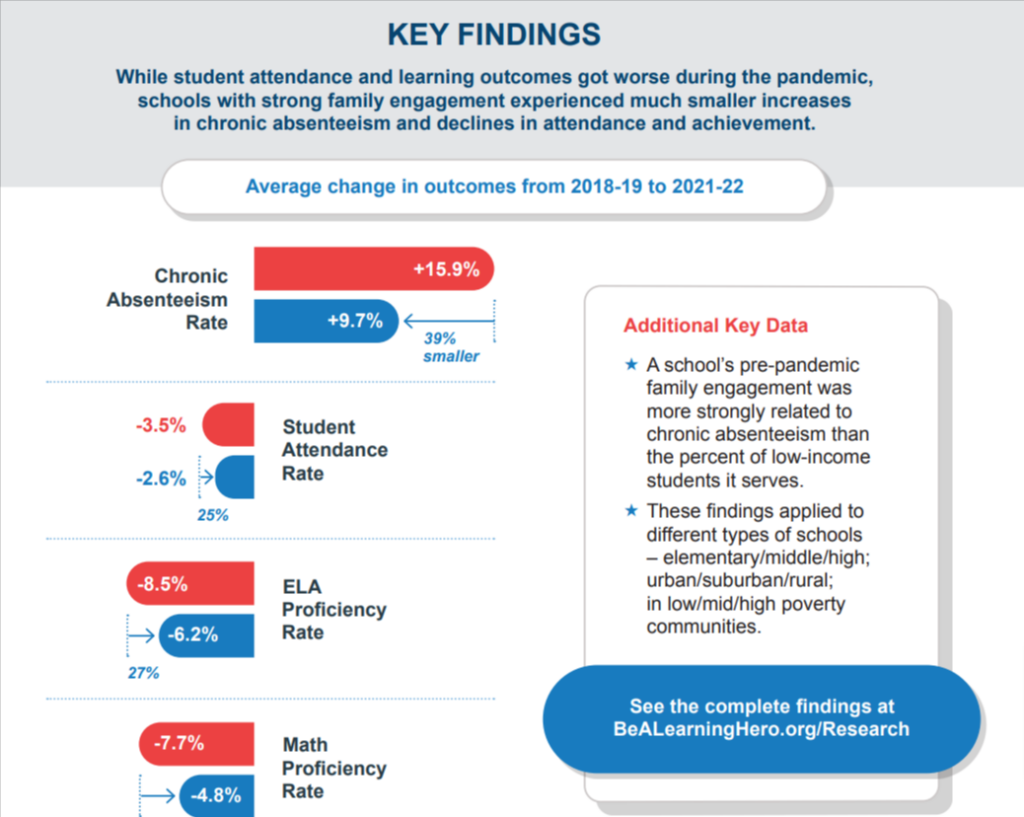A 3rd grader with asthma.
A middle school student struggling with social anxiety.
A Junior who needs to work to support their family.
A PreK child who stays home for every sniffle.
What do these students have in common? They may all be at risk of chronic absenteeism. Often referred to as America’s “hidden educational crisis,” chronic absenteeism is defined as missing 10% or more of school days. Rates have nearly doubled in the aftermath of the COVID-19 pandemic, and finding solutions has become a top priority in schools across the country. As the examples above illustrate, the root causes of absenteeism vary widely, but the effects are consistently concerning: lower achievement, increased risk of dropout, and enduring health and economic setbacks.
The good news is that schools, communities, and families possess the collective power to turn the tide. The key lies in transforming our approach from punitive measures to collaborative partnerships. Read on to learn about three essential strategies to support improved attendance in your school community!
1. Shift from “Truancy” to “Chronic Absenteeism”
Words matter! In recent years, the nonprofit organization Attendance Works has led efforts to reframe the conversation around missed school. One important piece is changing our language around absences. Instead of labeling students truant, which implies punishment, Attendance Works uses the term “chronic absenteeism.” The graphic below, from Attendance Works, illustrates the difference.

2. Dig into Data to Understand the Root Causes of Absence
To find solutions, it’s essential to understand the root causes of absenteeism. Carefully examining attendance data can help schools identify the reasons for student absences. Although each student has a unique story, most absences fall into four categories: Barriers, Aversion, Disengagement, and Misconceptions. When schools uncover the specific causes of absences, we can connect students with the resources or supports that can help. The graphic below, from this Root Causes resource from Attendance Works, shares further details.

3. Create Positive Partnerships
Improving attendance is a team effort! When district leaders, administrators, teachers, and families work together, they can make a positive difference. Family engagement is a key strategy for supporting attendance efforts because it provides opportunities for school and family stakeholders to come together. Review the summary infographic from Learning Heroes, Key Findings of the Family Engagement Impact Study, shown in the image below, to learn about research documenting the powerful impact family engagement has on student attendance.

Are you feeling inspired to address chronic absenteeism in your school setting? Our course, 5418: Addressing Chronic Absenteeism with Creative Collaboration is here to help! After exploring the research on best-practice interventions, and analyzing attendance data in your setting, you’ll walk away with a personalized action plan ready to implement in your own school community. Whether you’re an educator, support staff member, or school leader, this road map will guide you in rebuilding consistent attendance habits and fostering a culture of attendance excellence.
About the Author

Sarah Murphy is the Evaluation Manager and a Professional Learning Specialist at Teaching Channel. She holds a B.A. in History and a Master’s in Education. Sarah began teaching in 2004 at the elementary level. She now leads Teaching Channel’s Evaluation Team, managing our wonderful team of Course Evaluators. Sarah is also a coursewriter and content creator, specializing in edtech, educator wellness, and content area teaching.
Fun fact: Sarah has camped in 18 national parks and hopes to visit all 63 someday!







